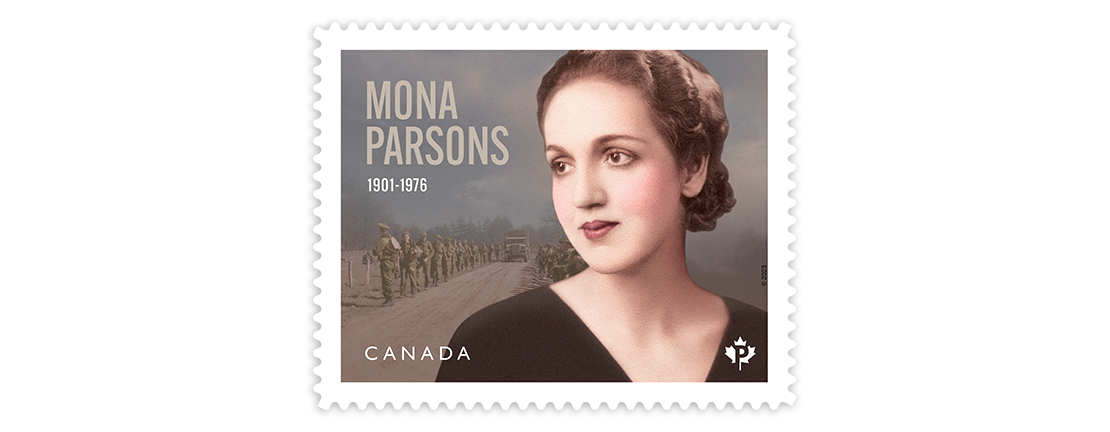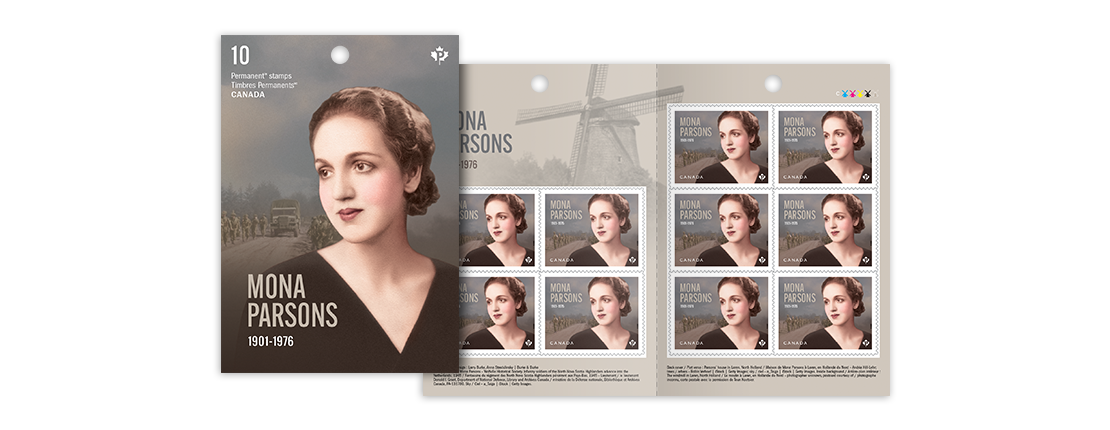“When I share Mona's story with people, I ask them to mention it the next time they hear those of men like Billy Bishop. Unlike them, she never wore a uniform, didn't carry a gun, and yet was willing to put her life on the line because of her belief in justice and freedom – and very nearly forfeited that life.”
Mona Louise Parsons’ experience as a resistance fighter and Nazi prisoner during the Second World War reads like the plot of a wartime thriller, but it’s a true story of grit and courage in the face of unimaginable horror.
Born in Middleton, Nova Scotia, in 1901, and raised Wolfville, Mona Louise Parsons joined New York’s Ziegfeld Follies and worked as a nurse before marrying Dutch businessman Willem Leonhardt and moving to the Netherlands. On their second wedding anniversary, Germany invaded Poland, and soon after, Britain declared war on Nazi Germany. After the Nazi occupation of the Netherlands began in May 1940, Parsons and her husband joined a resistance network, offering their home in Laren as a covert waystation for downed Allied airmen.
“She was enraged by the Nazi occupation of her adopted homeland – the Netherlands – and like hundreds of other Dutch citizens decided to do whatever she could to fight back.”

Betrayed, arrested, sentenced to death
Parsons and her husband were ultimately betrayed and taken into custody. One of the first (and few) women to stand trial before a Nazi military tribunal in the Netherlands, she was found guilty and sentenced to death by firing squad, a sentence that upon her own appeal was commuted to life at hard labour in a German prison.
“I had steeled myself for this moment. I knew that all eyes were on me, expecting me to burst into tears. I was determined not to humble myself before any of them. As I left the courtroom, I put my heels together and bowed toward the judge, the prosecutor and my German counsel, who were standing together in a group. ‘Guten morgen, meine herren (Good morning, gentlemen),’ I said.”
In January 1942, she was transferred to Anrath Penitentiary in Germany, then to Wiedenbrück in 1944 and Vechta the following year. There she would befriend 22-year-old Baroness Wendelien van Boetzelaer and form a friendship forged in courage that would last a lifetime.

A daring escape
In March 1945, during the chaos of an Allied bombardment, Parsons and van Boetzelaer escaped. Despite being fluent in German, Parsons feared her Canadian accent would give her away, so she posed as van Boetzelaer’s aunt, and feigned a speech impediment. For three weeks, the two walked roughly 125 kilometres across Germany. Separated from van Boetzelaer at the Dutch border, and safe in the Netherlands, Parsons dropped her disguise and sought help. After receiving bandages for her badly infected feet, a kind farmer transported her to Allied troops stationed nearby.
There, at 87 pounds (just under 40 kg), Parsons told a soldier she was a Canadian and needed to contact Canadian officials to get word to her father in Nova Scotia that she was still alive. In times of war, trust suffers – so the Canadian soldier was suspicious and asked her from what part of Nova Scotia she hailed. Her response – from a little town called Wolfville in the Annapolis Valley – stunned him. He was from Halifax and a member of the North Nova Scotia Highlanders.
Back to Laren, then home to Nova Scotia
Parsons was eventually reunited in Laren with her husband, who died in April 1956. The following year, she moved back to Nova Scotia and married Major General Harry Foster in 1959. Widowed a second time, in 1970 Parsons moved back to Wolfville, where she died in 1976. Her epitaph commemorates her only as the “wife of” her second husband. While ignored by the Canadian government, Parsons received commendations from both Britain and the United States for helping Allied airmen escape from or evade enemy capture.
Parsons’ story might have remained hidden forever if not for those who refused to let her courageous story be lost to time. Today, a statue of Mona Parson can be found in front of the Wolfville, Nova Scotia, post office, where this stamp was proudly unveiled.
“I’ve been sharing Mona’s story for 14 years and I still to this day get shivers when I tell it to a visitor. Each time the look on their face is the same – astonishment. It is both profound and inspiring. She truly is a Canadian heroine who deserves to have her story shared.”

Stamp tells the story of Mona Parsons, Second World War hero
Available now